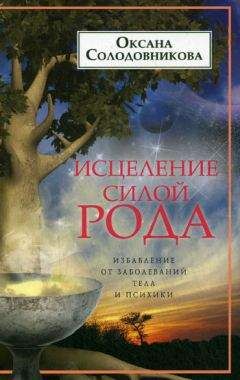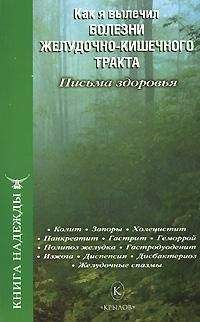Кевин Фонг - Extremes. На пределе
Cyranoski, D. 2003. ‘China joins investigation of mystery pneumonia.’ Nature, 422(6931): 459.
Fleck, F. ‘Carlo Urbani.’ British Medical Journal. 2003 Apr; 326(7393): 825.
Fleck, F. ‘How SARS changed the world in less than six months.’ Bulletin of the World Health Organization. 2003. Available at: http://www.scielosp.org/scielo.php?script=sci_arttext&pid=S0042-96862003000800014&lang=pt.
McFarlan, A.M., Dick, G.W. & Seddon, H.J. ‘The epidemiology of the 1945 outbreak of poliomyelitis in Mauritius.’ Quarterly Journal of Medicine. 1946; 15: 183–208.
Peiris, J.S. et al. ‘The severe acute respiratory syndrome.’ New England Journal of Medicine. 2003; 349(25): 2431–41.
Peiris, J. S. M., Lai, S. T., Poon, L. L. M. et al. ‘Coronavirus as a possible cause of severe acute respiratory syndrome.’ The Lancet. 2003; 361: 1319–25.
Reilley, B., Van Herp, M., Sermand & Dentico, N. ‘SARS and Carlo Urbani.’ New England Journal of Medicine. 2003 May; 348(20): 1951–2.
Reisner-Sénélar, L., The Danish anaesthesiologist Björn Ibsen a pioneer of long-term ventilation on the upper airways. Dept. of Medicine. Johann Wolfgang Goethe University. 2009.
Reynolds, L.A. & Tansey, E.M. (eds). ‘History of British intensive care c.1950–c.2000.’ Wellcome Witnesses to Twentieth Century Medicine. Vol. 42. Queen Mary, University of London. 2011.
Richmond, C. ‘Bjørn Ibsen.’ British Medical Journal. 2007 Sept; 335(7621): 674.
Sample, D. & Evans, C. ‘Estimates of the infection rates for poliomyelitis virus in the years preceding the poliomyelitis epidemics of 1916 in New York and 1945 on Mauritius.’ Journal of Hygiene. 1957 June; 55(2): 254–65.
Wong, T. et al. ‘Cluster of SARS among medical students exposed to single patient, Hong Kong.’ Emerging Infectious Diseases. 2004 Feb; 10(2): 269–76.
ВОДА
Длительные исследования доктором Си Джеем Бруксом причин, по которым так трудно выжить при крушениях вертолетов над морем, лишь вскользь упомянуты мной в начале этой главы. Я имел удовольствие лично познакомиться с доктором Бруксом в прошлом году в Лондоне, на конференции по проблемам контроля факторов риска. Он уверял, что, летая на вертолетах, непременно протягивает по полу веревку от двери выхода к тому креслу, где он будет сидеть, и закрепляет ее клейкой лентой — чтобы в случае чего наверняка найти выход!
Мой друг доктор Майк Типтон, специалист по физиологии теплорегуляции из Саутгемптонского университета, терпеливо отвечал на все вопросы, возникшие у меня в ходе работы над этой и другими главами книги касательно реакции человеческого организма на предельные значения низких и высоких температур. Майк так здорово мне помог, что я даже почти простил ему то, что он подверг меня холодовому шоку в бассейне с ледяной водой, в котором экспериментирует.
Brooks, C., ‘The human factors relating to escape and survival from helicopters ditching in water.’ 1989. Available at: http://oai.dtic.mil/oai/oai?verb=getRecord&metadataPrefix=html&identifier=ADA215755
Brooks, C., MacDonald, C. & Donati, L. ‘Civilian helicopter accidents into water: Analysis of 46 cases, 1979–2006.’ Aviation, Space, and Environmental Medicine. 2008 Oct; 79(10): 935–40.
Cheung, S. S., D’Eon, N. J. & Brooks C. J. ‘Breath-holding ability of offshore workers inadequate to ensure escape from ditched helicopters.’ Aviation, Space, and Environmental Medicine. 2001 Oct; 72(10): 912–8.
Craig, A. B. ‘Causes of loss of consciousness during underwater swimming.’ Journal of Applied Physiology. 1961; 16: 583–6.
Craig, A.B & Medd, W.L. ‘Oxygen consumption and carbon dioxide production during breath-hold diving.’ Journal of Applied Physiology. 1968; 24: 190–202.
Craig, A.B. & Ware, D.E. ‘Effect of immersion in water on vital capacity and residual volume of the lungs.’ Journal of Applied Physiology. 1967 Oct; 23(4): 423–5.
Craig, A. B. ‘Depth limits of breath hold diving (an example of Fennology).’ Respiration Physiology. 1968; 5: 14–22.
Craig, A. B. ‘Heart rate responses to apneic underwater diving and to breath holding in man.’ Journal of Applied Physiology. 1963; 18: 854–62.
Fahlman, A. ‘The pressure to understand the mechanism of lung compression and its effect on lung function.’ Journal of Applied Physiology. 2008; 104(4): 907–8.
Ferretti, G. & Costa, M. ‘Diversity in and adaptation to breath-hold diving in humans.’ Comparative Biochemistry and Physiology Part A: Molecular & Integrative Physiology. 2003; 136(1): 205–13.
Koehle, M., Lepawsky, M. & McKenzie, D. ‘Pulmonary oedema of immersion.’ Sports Medicine. 2005; 35(3): 183–90.
Levett, D. Z. & Millar, I. L. 2008. ‘Bubble trouble: A review of diving physiology and disease.’ Postgraduate Medical Journal. 2008; 84(997): 571–8.
Lindholm, P. & Lundgren, C. ‘The physiology and pathophysiology of human breath-hold diving.’ Journal of Applied Physiology. 2009 Jan; 106(1): 284–92.
Parkes, M.J. ‘Breath-holding and its breakpoint.’ Experimental Physiology. 2006 Jan; 91(1): 1–15.
Qvist, J. et al. ‘Arterial blood gas tensions during breath-hold diving in the Korean ama.’ Journal of Applied Physiology. 1993; 75(1): 285–93.
Rahn, H. ‘Breath-hold diving: A brief history.’ National Sea Grant Library. 2004. Available at: http://nsgl.gso.uri.edu/nysgi/nysgiw85001/nysgiw85001_part1.pdf
Schagatay, E. et al. ‘Selected contribution: Role of spleen emptying in prolonging apneas in humans.’ Journal of Applied Physiology. 2001; 90(4): 1623–9, discussion 1606.
Tipton, M. & Golden, F. ‘Essentials of Sea Survival.’ Human Kinetics. 2002.
ОРБИТА
Ли Со Ён буквально взмыла к славе после успешно пройденного отбора и полета в качестве первого космонавта Южной Кореи. Я обратил на нее внимание на конференции по космической медицине в Хьюстоне. Девушка, которая не расставалась со смартфоном и то и дело отправляла восторженные сообщения в «Твиттер», не вполне соответствовала представлениям о типичном покорителе космоса. Со Ён согласилась дать мне интервью для этой книги и любезно просмотрела его текст, чтобы исключить неточности и ошибки.
Мне довелось видеть старт трех космических кораблей. От этого зрелища каждый раз захватывает дух. Честью для меня было присутствовать при запуске и посадке последнего шаттла — STS 135 — в июле 2011 года. Теперь я знаю, что на фоне стрессов, которым подвергается организм во время старта, силовые перегрузки, всегда интересовавшие меня как медика и физиолога, — далеко не самое суровое испытание для космонавта.
‘Report of the Columbia Accident Investigation Board.’ 2003. Washington. Available at: http://www.zsf.jcu.cz/jab/1_s1/supplementJAB1_1.pdf?set_language=cs
‘Report of the Presidential Commission on the Space Shuttle Challenger Accident.’ NASA. 6 June 1986.
Burroughs, W. This New Ocean: The Story of the First Space Age. Random House, 1999.
Curtis, H.D. Orbital Mechanics for Engineering Students. Elsevier, 2005; 257–73.
Houtchens, B.A. ‘Medical-care systems for long-duration space missions.’ Clinical Chemistry.1993; 39(1): 13–21.
Roth, E.M. ‘Rapid (explosive) decompression emergencies in pressure-suited subjects.’ NASA Contractor Report 1223. National Aeronautics and Space Administration. 1968; 1–125. Available at: http://www.ncbi.nlm.nih.gov/pubmed/5305515
Summers, R.L. et al. ‘Emergencies in space.’ Annals of Emergency Medicine. 2005; 46(2): 177–84.
Wolfe, T. The Right Stuff. Jonathan Cape, 1979.
МАРС
В 1997 году мы всерьез собирались на Марс. По крайней мере, так это выглядело для меня. Та первая поездка в Хьюстон навсегда врезалась мне в память. Эксперименты с гидропоникой и регенеративными системами жизнеобеспечения проводил ученый по имени Дуг Мин, немного напомнивший мне персонажа Брюса Дерна из фильма «Молчаливый бег».
В астрофизике меня привлекали пограничные состояния — другими словами, возможность наблюдать за поведением систем в предельных условиях. Именно в такой ситуации окажется человеческий организм во время полета на Марс.
Мне посчастливилось быть удостоенным стипендии NESTA (Национального фонда по поддержке науки, технологий и искусства), а позднее — гранта еще одного фонда, что позволило мне продолжить работу в НАСА. Профессор Билл Палоски содействовал тому, что я еще не раз побывал в Центре космических исследований им. Джонсона, и стал моим наставником, а с годами и добрым другом.
Путешествие на Марс до сих пор кажется нам научной фантастикой. Но мы наверняка полетим на Марс еще до окончания этого столетия, уж в этом-то я твердо убежден. Если развитие науки в XXI веке будет столь же стремительным, как в ХХ, мы, я уверен, добьемся намного большего.
‘Planetary exploration utilizing a manned flight system.’ Office of Manned Space Flight, NASA Headquarters, Washington DC, 3 October 1966: 16.
SEI Synthesis Group. ‘America at the threshold: America’s space exploration initiative.’ Washington DC: Government Printing Office, May 1991.
Carmeliet, G., Nys, G. & Bouillon, R. ‘Microgravity reduces the differentiation of human osteoblastic MG–63 cells.’ Journal of Bone and Mineral Research. 1997 May; 12(5): 786–94.
Carmeliet, G., Vico, L. & Bouillon, R. ‘Space flight: A challenge for normal bone homeostasis.’ Critical Reviews. TM in Eukaryotic Gene Expression. 2001; 11(1–3): 131–44.
Cassenti, B. ‘Trajectory options for manned Mars missions.’ Journal of Spacecraft and Rockets. 2005 Sept/Oct; 42(5).
Crocco, Gaetano, A. ‘One-Year Exploration-Trip Earth–Mars–Venus–Earth.’ Paper presented at the Seventh Congress of the International Astronautical Federation, Rome, Italy, 1956; 227–52.
D’Aunno, D. S., Dougherty AH, DeBlock HF & Meck JV. ‘Effect of short-and long-duration spaceflight on QTc intervals in healthy astronauts.’ American Journal of Cardiology. 2003 Feb; 91(4): 494–7.
Davis, J.R., Vanderploeg, J.M., Santy, P. A., Jennings, R.T. & Stewart, D. F. ‘Space motion sickness during 24 flights of the space shuttle.’ Aviation, Space, and Environmental Medicine. 1988 Dec; 59(12): 1185–9.
Drake, B. ‘Reference Mission Version 3.0 Addendum to the Human Exploration of Mars: The Reference Mission of the NASA Mars Exploration Study Team.’ 1998. Document ID: NASA/SP–6107–ADD
Fitts, R.H., Riley, D.R. & Widrick, J.J. ‘Functional and structural adapta— tions of skeletal muscle to microgravity.’ Journal of Experimental Biology. 2001 Sep; 204(18): 3201–8.
Fogleman, G., Leveton, L. & Charles, J. ‘The Bioastronautics Roadmap: A Risk Reduction Strategy for Human Exploration.’ 1st Space Exploration Conference: Continuing the Voyage of Discovery, Orlando, Florida, 30 Jan 2005. AIAA–2005–2526.
Fritsch-Yelle, J.M., Leuenberger, U.A., D’Aunno, D.S., Rossum. A.C., Brown, T. E. & Wood, M. L. ‘An episode of ventricular tachycardia during long–duration spaceflight.’ American Journal of Cardiology. 1998 Jun; 81(11): 1391–2.
Graybiel, A., Clark, B., & Zarriello, J.J. ‘Observations on human subjects living in a “slow rotation room” for periods of two days.’ Archives of Neurology. 1960; 3: 55–73.
Holstein, G. R., Kukielka, E. & Martinelli, G.P. ‘Anatomical observations of the rat cerebellar nodulus after 24 hr of spaceflight.’ Journal of Gravitational Physiology. 1999 Jul; 6(1): 47–50.
Harm, D.L. & Parker, D.E. ‘Preflight adaptation training for spatial orien— tation and space motion sickness.’ Journal of Clinical Pharmacology. 1994 Jun; 34(6): 618–27.
Hohmann, W. The Attainability of Heavenly Bodies (translation of Die Erreichbarkeit der Himmelskörper). NASA Technical Translation F–44, Washington DC. 1960.
Joosten, K.B., ‘Preliminary Assessment of Artificial Gravity Impacts to Deep-Space Vehicle Design.’ NASA Johnson Space Center. 2007. NASA Document ID: 20070023306.
Lackner, J.R. ‘Spatial orientation in weightless environments.’ Perception. 1992; 21(6): 803–12.




